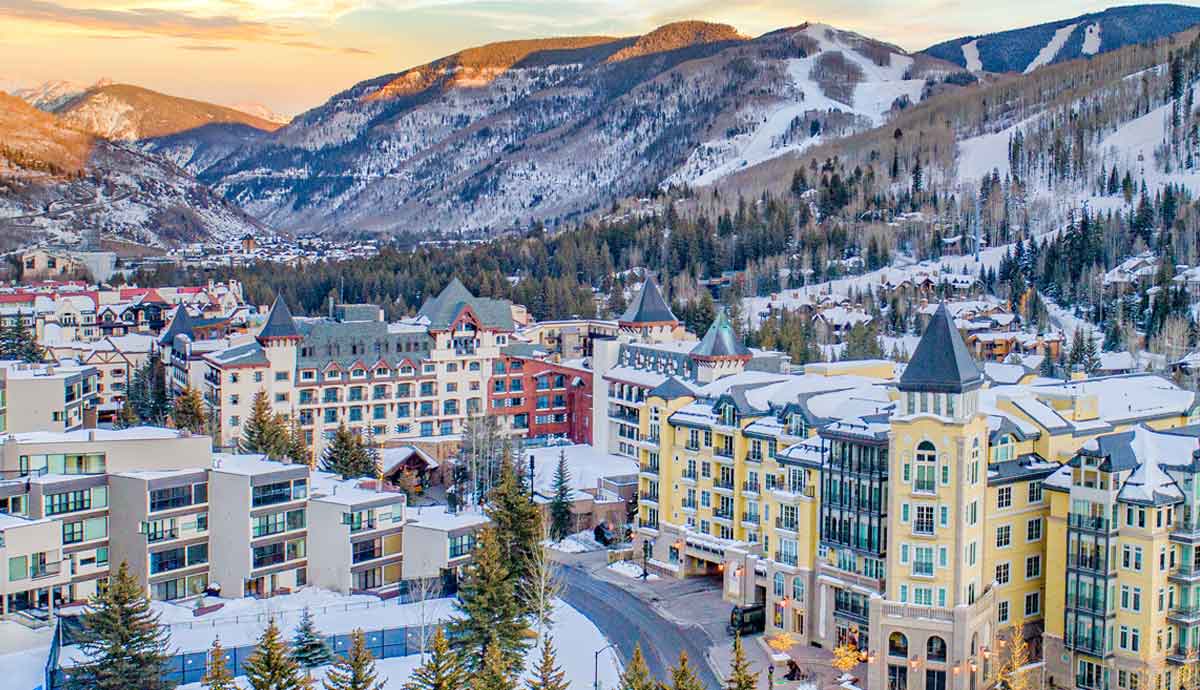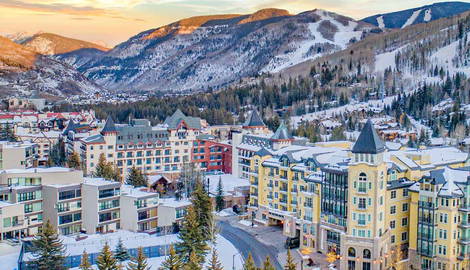
Stretching over 3,000 miles from northern Canada to New Mexico, the Rocky Mountains are an iconic North American range, forming the backbone of the continent. Known for their dramatic peaks, lush forests, and sweeping alpine landscapes, the Rockies attract millions each year for hiking, skiing, and adventure. But they’re more than just stunning mountains and scenic trails. Tucked among the rugged peaks are historic small towns that offer glimpses into a past filled with mining booms, pioneering spirits, and architectural treasures. From Colorado to Montana, these places hold stories of gold rushes, Victorian-era communities, and frontier life, all preserved within their charming streets and historic landmarks. Here are ten must-visit historic small towns in the Rockies that will take you back in time while surrounded by breathtaking natural beauty.
1. Silverton, Colorado

Founded in 1874, this Colorado town became a bustling mining area due to rich silver and gold deposits. The Denver & Rio Grande Railway’s arrival in 1882 spurred its growth. This allowed for easier transport of precious metals. Though the silver market crash of 1893 slowed operations, Silverton shifted focus to gold mining, which allowed it to sustain the economy well into the 20th century. The town’s last mine closed in 1991. This marked the end of the flourishing mining era of Silverton.
Today, this beautiful historic town is a National Historic Landmark District. It preserves its Victorian architecture and mining history. Visitors can ride the historic Durango & Silverton Narrow Gauge Railroad, a journey that offers breathtaking mountain views, and explore the Mayflower Mill, an ore processing mill from 1929.
Some of the notable historic sites you need to visit in Silverton include the Old Hundred Gold Mine, where visitors can tour underground tunnels and experience the life of early miners, and the iconic Grand Imperial Hotel, dating back to 1882, which offers a glimpse into the elegance of a bygone era.
2. Ouray, Colorado

Ouray is named after Ute Chief Ouray and was established in 1876. The town began as a mining camp during the gold and silver rushes. Its strategic location made it a vital supply center for surrounding mining regions. Today, Ouray is renowned for its well-preserved Victorian architecture and is designated as a National Historic District.
When you head to this iconic Colorado town, the first place you need to explore is the 1881-built Ouray County Courthouse. Another historic place, a must-see, is the Beaumont Hotel, an 1886 luxury establishment that has hosted numerous dignitaries.
As for the Wright Opera House, it was constructed in 1888, and it provides you with what the cultural past of Ouray looked like. Also, the Ouray County Museum, housed in the original 1887 Miner’s Hospital, showcases artifacts from the mining era of the town.
One interesting thing to note is that Ouray is known as the “Switzerland of America” due to its stunning mountain scenery. The Ouray Hot Springs, continue to welcome visitors since 1927, where natural mineral pools offer relaxation amidst the stunning mountain backdrop.
3. Georgetown, Colorado

“The Pike’s Peak Gold Rush in 1859 marked the beginning of Georgetown as a bustling silver mining center, earning it the nickname “Silver Queen of Colorado.” This historic Colorado town is a must-visit for fans of Victorian architecture, offering a glimpse into the era of frontier expansion, a time marked by profound conflicts with Native American tribes amid the race for precious resources. You’ll have the chance to visit plenty of historic sites in town, such as the Georgetown–Silver Plume Historic District, a National Historic Landmark, which includes the Georgetown Loop Railroad. The latter is a restored narrow-gauge railway offering scenic rides through the mountains.
Other historic places worth visiting in Georgetown include the Hamill House Museum, showcasing 19th-century life, and the Hotel de Paris Museum, a former French inn from 1875. The town is so rich in history and preserved sites it makes for a compelling destination to learn more about the mining heritage of Colorado.
4. Virginia City, Montana

As you already know, the Rocky Mountains are not all Colorado. You also have Wyoming, Idaho, Utah, New Mexico, and, above all, Montana. And Montana, particularly, is home to one stunning historic town that is absolutely worth visiting in the Rockies. That is Virginia City, which was founded in 1863 following a significant gold discovery in Alder Gulch. This allowed the area to rapidly become a bustling mining town. Virginia City actually served as the territorial capital from 1865 to 1875.
Designated a National Historic Landmark District, Virginia City features over 200 nineteenth-century buildings, including the Thompson-Hickman Museum, which houses artifacts from the mining era of the town. You can explore the original Madison County Courthouse, constructed in 1876, and the Bale of Hay Saloon, Montana’s oldest operating saloon. The Virginia City Players perform in the Opera House. They offer authentic 19th-century theater experiences.
5. Leadville, Colorado

Situated at an elevation of 10,152 feet in the Rockies, this ranks as the highest incorporated city in the United States. It was founded in 1877 and is known for its rich mining history, which began with a gold rush in 1860 and was followed by a silver boom in 1878. This allowed Leadville to attract thousands of prospectors and grow so rapidly.
Nowadays, when you head to this historic town, you’ll have the chance to explore the 1879-built Tabor Opera House. It was constructed by mining magnate Horace Tabor. Another historic site to visit is the National Mining Hall of Fame and Museum, which will teach you a whole lot about the area’s mining heritage. As for the Leadville Historic District, designated a National Historic Landmark, it encompasses 70 square blocks of original Victorian architecture, which gives you a unique window into the mining era of Colorado.
6. Crested Butte, Colorado

Crested Butte began as a supply town for nearby silver mines in 1878 before transitioning into a coal mining hub. Located at 8,885 feet in the Elk Mountains, part of the Rockies, it earned the nickname “Gateway to the Elk Mountains.” It became a vital center for commerce and mining thanks to the growth spurred by the arrival of the Denver & Rio Grande Railroad in 1881.
Start your visit by checking out the Crested Butte Historic District, designated a National Historic Landmark, which includes over 300 historic buildings. Also, another historic place to explore is the Crested Butte Museum. It will offer insights into the mining heritage of the town and its evolution into a ski destination.
Known as the “Wildflower Capital of Colorado,” the area boasts stunning summer blooms and is a haven for outdoor enthusiasts year-round.
7. Nederland, Colorado

Nederland’s name, meaning “low lands” in Dutch, is proof of its role as a supply center for nearby high-altitude mining communities like Caribou. The town was established in 1874, where it began as a trading post between Ute Indians and European settlers.
Situated at 8,228 feet in the Rocky Mountains, Nederland became a hub for silver and tungsten mining in the late 19th and early 20th centuries.
When visiting Nederland, it would make sense to first head to the Nederland Mining Museum. The town is also home to the Carousel of Happiness, a restored 1910 carousel featuring hand-carved animals. This is a must-see. If you’re an outdoor enthusiast, then you’ll enjoy nearby attractions like the Indian Peaks Wilderness and Eldora Mountain Resort.
8. Ward, Colorado

Ward is one of Colorado’s oldest mining towns. It was actually established in 1860 and is situated at 9,450 feet in the Rockies. Named after prospector Calvin Ward, who discovered gold in the area, Ward experienced rapid growth during the Colorado Gold Rush, which allowed it to become a significant mining hub.
Ward retains its historic charm with plenty of preserved structures, such as the Ward School, which dates back to 1898. It now serves as the town hall, public library, and post office and is listed on the National Register of Historic Places. Other notable historic places you should explore in Ward include the Historic Ward Community Church and the old Catholic church. They’re both highlights of the rich past of Ward.
9. Lake City, Colorado

Nestled at 8,661 feet in the San Juan Mountains, which are part of the Rocky Mountains, Lake City was established in 1874. Founded during the Colorado Silver Boom, it served as a vital supply center for surrounding mining districts. Head to the Lake City Historic District, which is home to over 200 historic structures. It’s also a National Historic Landmark.
Other historic sites you need to visit in Colorado’s Lake City include the Hinsdale County Courthouse, built in 1877, and the Lake City Museum, housed in the original 1880s school building. The museum makes for a perfect visit if you want to see artifacts from the mining era of Lake City. The nearby Alpine Loop Scenic Byway offers breathtaking views of the Rockies and access to ghost towns like Capitol City.
10. Manitou Springs, Colorado

Located at the base of Pikes Peak in the Rocky Mountains, Manitou Springs is known for its natural mineral springs that attracted Native American tribes and, later, settlers seeking the waters’ reputed healing properties. It was founded in 1872, and in the late 19th century, it became a popular health resort. This explains why the town houses lots of grand hotels and spas.
At present, you will mostly love visiting the Manitou Springs Historic District, which encompasses much of the town and features well-preserved Victorian architecture. Head to the Cliff House at Pikes Peak, a historic hotel dating back to 1873. Also, make sure to visit the Manitou Springs Heritage Center and Museum. Here, you’ll see exhibits on the rich history of Manitou Springs.
The nearby Manitou Cliff Dwellings provide a glimpse into the ancient Ancestral Puebloan culture.










